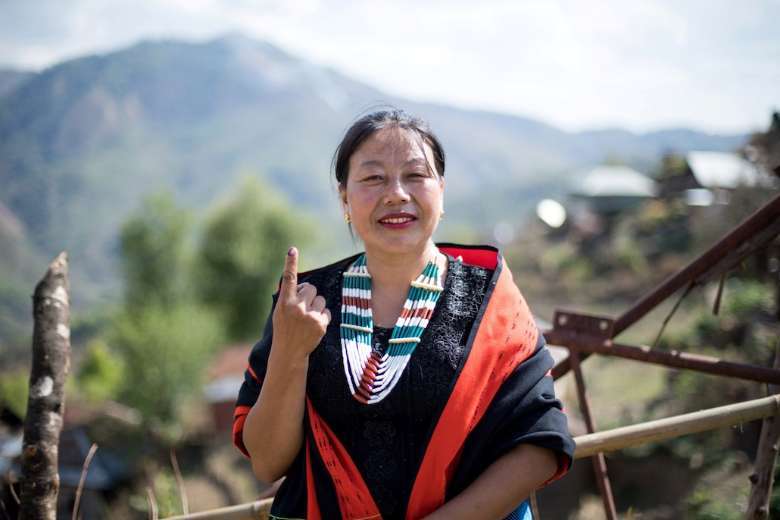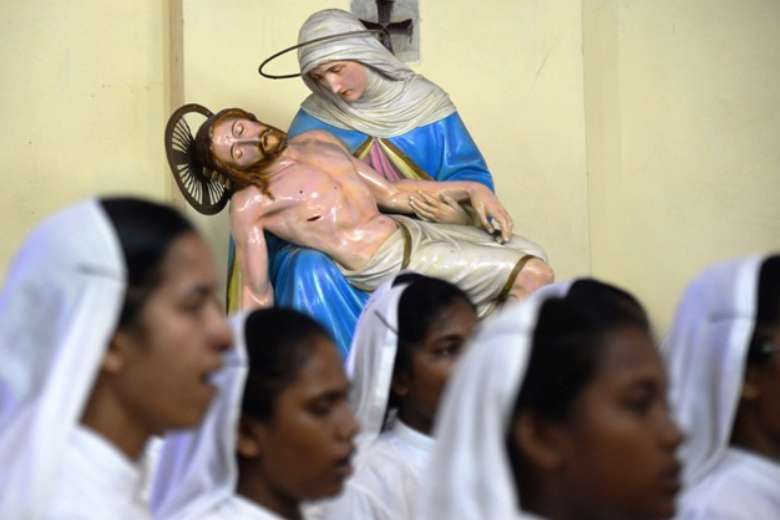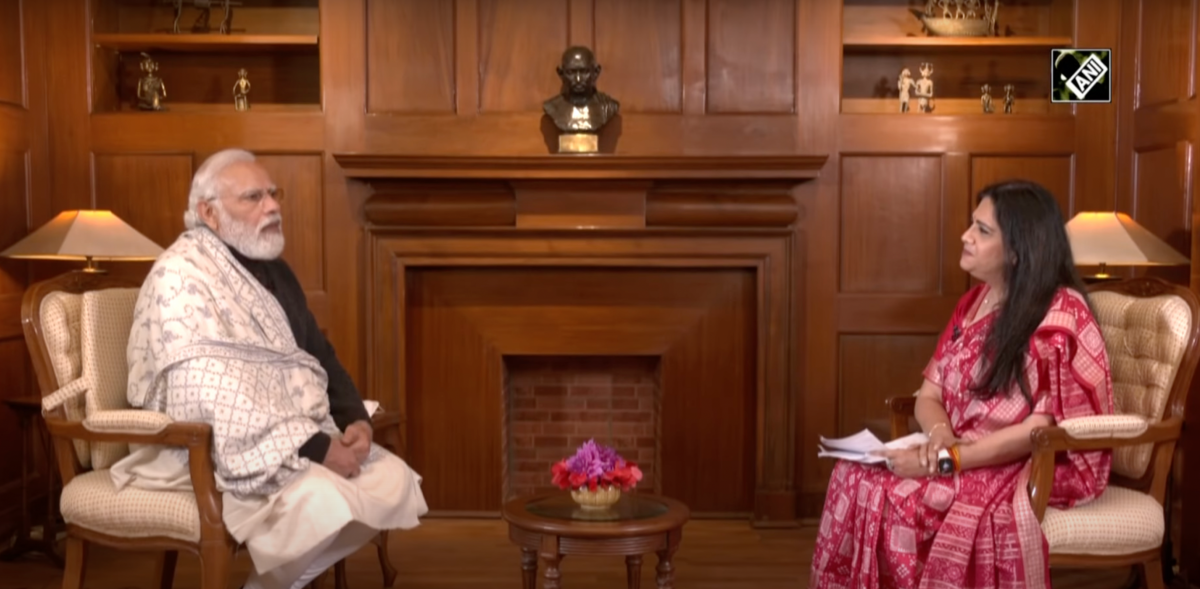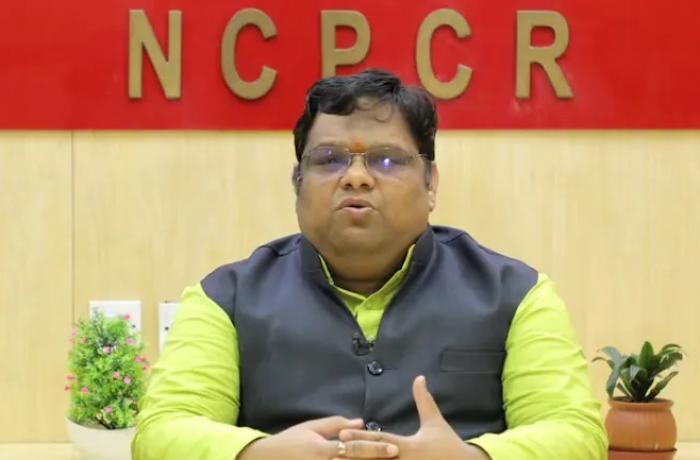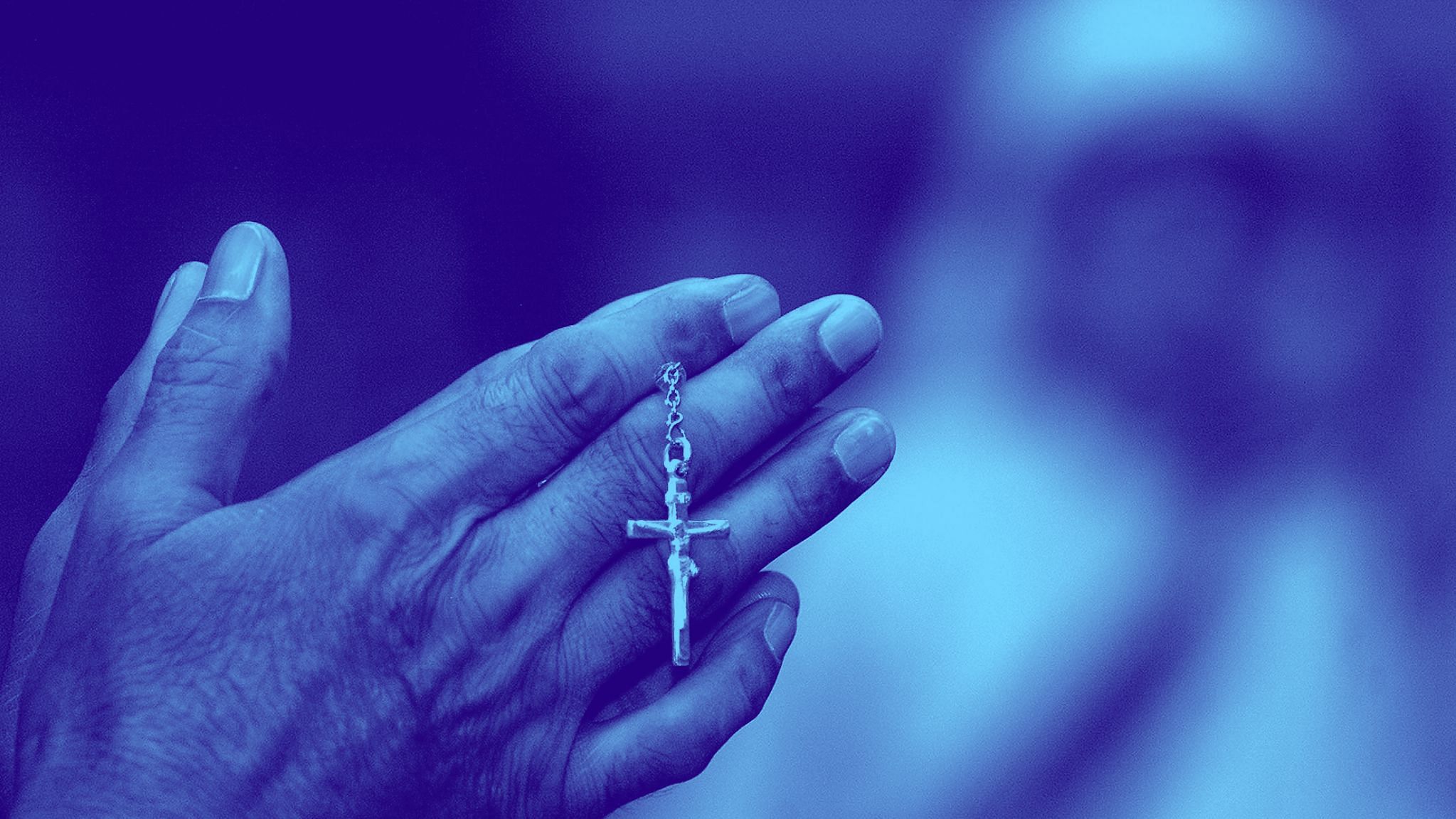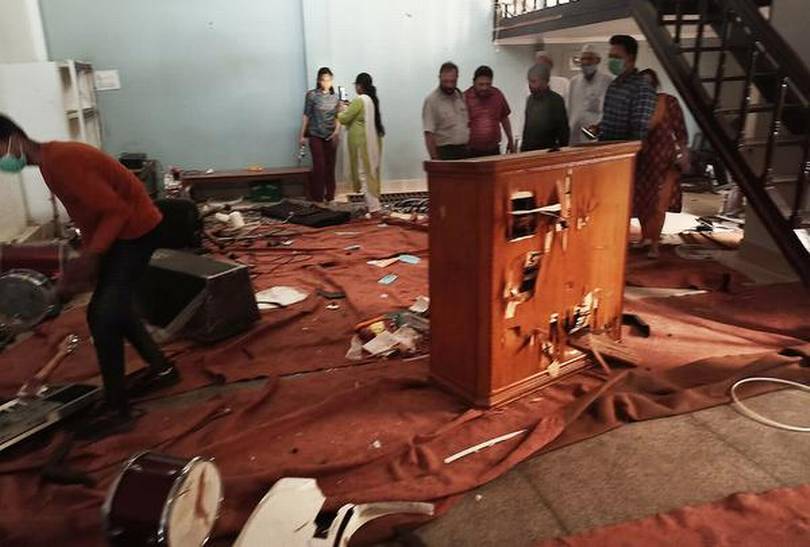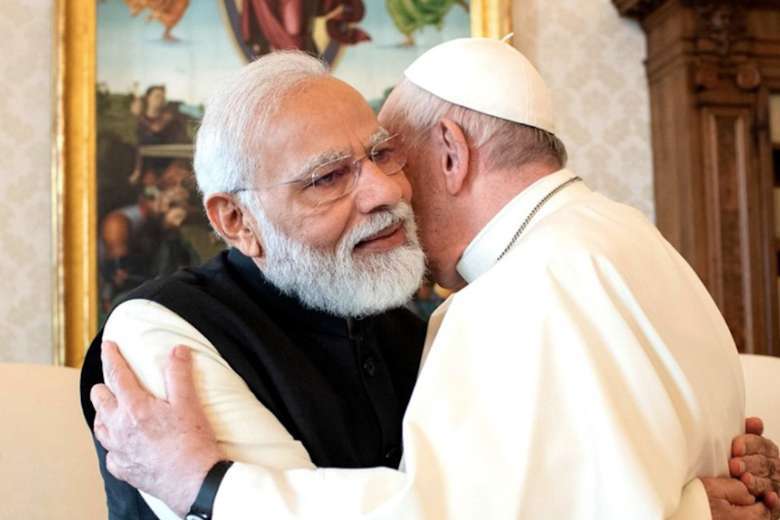Indian PM’s party keen to retain power in Christian stronghold
Pro-Hindu BJP seeks to woo voters in cash-strapped Manipur state 03/04/2022: State elections in Christian stronghold Manipur kicked off the polling season with Indian Prime Minister Narendra Modi’s pro-Hindu Bharatiya Janata Party (BJP) vowing to retain power. In the first phase that began on Feb. 28, elections were held for 40 seats, while polling for 20 constituencies in the hilly northeastern region will be held on March 5. Initially, the first phase of voting was slated for Sunday, Feb. 27, but following protests from Christian leaders it was rescheduled to Feb. 28. According to the last official census, Christians make up 41.29 percent of Manipur's population and Hindus marginally more at 41.39 percent. Muslims represent 8.4 percent. However, Christians have a decisive say in 20 of the 60 seats in the hill state. In the remaining 40, native Meitei Hindus hold sway. The BJP bagged a mere 21 seats in the 2017 elections. The Hindu party then came to power by forming an alliance with two smaller parties — the National People's Party and the Naga People's Front. The latter is essentially based out of neighboring Nagaland and draws its strength from the Christian Naga population. Elections in Manipur and other northeastern states are guided by one
Indian Catholics seek legal action against defamation.
They will no longer be mere spectators to media attempts portraying them in a poor light, say nuns and priests in Kerala: Catholic officials in the southern Indian state of Kerala have begun lodging police complaints against what they call a rising trend in media to defame the Church, particularly priests and nuns. “Our priests and nuns have lodged more than 160 police complaints across the state against certain online, mainstream and social media platforms for portraying Catholic priests and nuns in a poor light,” said Father Michael Pulickal, secretary of Kerala Catholic Bishops' Council's commission for social harmony and vigilance. Catholic religious men and women are no longer going to be mere spectators to the deliberate attempts to denigrate their image before the public by publishing lies, half-truths and misleading facts, he told UCA News. Father Pulickal said Kerala police were refusing to register their complaints in some cases but the bishops’ council and other church bodies will “not succumb to pressure” and continue their campaign “for legal action until we get justice.” The government had failed to take disciplinary action and hence “our people are going to lodge as many complaints as possible until the authorities initiate action against those trying to destroy
With India’s Election Commission (EC) the statutory body that hold, administer and certify elections and Big Media as Allies, Narendra Modi is Pushing the Boundaries of Election Law
The Wire News: In the 48 hours before polling ends, candidates are not allowed to put out election matter—whether through TV or theatrical performance—calculated to influence voters. Yet that is precisely what the prime minister did. A shorter version of this piece was first published on The India Cable – a premium newsletter from The Wire & Galileo Ideas – and has been republished here. To subscribe to The India Cable, click here. On the face of it, the interview Narendra Modi gave ANI, a news television channel. on the eve of the first phase of elections to the state legislature in the northern Indian state of Uttar Pradesh is a violation of India’s election law, which prohibits the display of “election matter” in any form in the 48 hours preceding the closing of polls. “Election matter,” Section 126 (3) of the Representation of the People Act says, “means any matter intended or calculated to influence or affect the result of an election.” In the last 48 hours, candidates are simply not allowed to put out election matter, whether it is through TV or a theatrical performance. Frankly, I don’t know which of these two categories Modi’s interview falls into but the answers he
How Hindu nationalist groups hijacked and wrecked India’s child protection body
(Edited for a Western Reader) A little after noon on Dec. 6, Rahul Raghuvanshi was about halfway through writing his maths exam paper in St Joseph’s School in the town of Ganj Basoda in Madhya Pradesh state’s Vidisha district. Suddenly, loud cries of “Jai Shri Ram!”, the war cry of Hindu nationalist groups, tore through the silence. There were sounds of smashing glass. Before he could react, the 17-year-old student saw a group of angry men outside his ground-floor classroom window, attacking the panes with iron rods. Shrieking in fear, Raghuvanshi and his 13 classmates jumped from their seats and were bundled out of the room by their teacher and the external examiner who had come to conduct their mid-term Class 12 exams under the Central Board of Secondary Education. They sought shelter in an empty classroom on the first floor. Their school seemed to be under siege by a mob of “400 or 500 people,” according to estimates by the principal and several teachers. The enraged crowd—largely members of the Bajrang Dal and Vishwa Hindu Parishad, the two most violent Hindu nationalist groups affiliated to the ruling Bharatiya Janata Party of Prime Minister Modi —had gathered to protest the “first holy communion” ceremony
Child abuse: Indian Commission seeks only ‘conversions’
02/04/2021: Journalistic investigation accuses the president of the NCPCR, the Indian national body for the rights of the child: "Carry out the Hindutva agenda against Christians and Muslims". All while in India the Covid-19 pandemic has created over 147 thousand orphans. "How Hindutva has kidnapped the body for the protection of children". To launch the heavy accusation against the Hindu nationalist movements that form the political base of Prime Minister Narendra Modi, is an investigation published in these days in India by the information site Scroll.in. A phenomenon that deals with a topic that in recent months we have encountered more and more often also in our reports on AsiaNews : the direct involvement of Indian public institutions that are supposed to defend the rights of children in the "anti-conversion" campaigns of Hindu nationalists that go to hit Christian schools and hostels that welcome minors. As the Scroll.in investigation documents, the issue of conversions has recently become a real obsession for the NCPCR: other cases are remembered such as the assault on St Joseph's School by Ganj Basoda , which is located in Madhya Pradesh. in the district where Kanoongo originates. At the beginning of December the school was the victim of
Myth and rhetoric: Dissecting the anti-conversion law
12/20/2021: The purpose of such laws is to give state protection for perpetrators of violence in society On paper, Article 25 of the Constitution guarantees everyone the right to profess, practise and propagate their relgion. This is subject to two kinds of restrictions — the laws regulating or restricting the secular aspects of religious practices, and the state regulating the religious practices themselves in the interests of public order, morality, health, and specific to Hindus, social welfare and reform. Constitutionally, one can choose one’s religion or choose none at any point of time in one’s life. The Constitution doesn’t say one is free to practise only one’s birth religion (or worse, only one state-mandated religion). So where do “anti-conversion laws” such as the one currently being contemplated by the Karnataka government fit in? Anti-conversion laws in India are not particularly new. Their history goes back to even pre-Independence days but post-Independence, Odisha had the first in 1967. The motivation behind this law was to check Christian missionaries in states with large tribal populations. Somewhat ironically titled the ‘Orissa Freedom of Religion Act, 1967’, the law prohibited “forcible conversion” and also mandated that anyone choosing to convert out of the faith they had been
Karnataka’s Church ‘Surveys’: Anti-Conversion Bill Will Fuel Right-Wing Violence
ANALYSIS: December 1, 2021: As of 31 October 2021, Karnataka ranks fourth in the country for its targeted violence against Christians Once upon a time, say, up to the turn of the century, Bangalore city was known as the ‘Catholic Capital of India’. It was also known as the cleanest city in India, and its tree-lined roads were an envy of the country. And Karnataka was just getting to be known as the gateway to south India for the Bharatiya Janata Party (BJP) and the Rashtriya Swayamsewak Sangh (RSS). As of 31 October 2021, Karnataka ranks fourth in the country for its targeted violence against Christians. Of the 320 or so cases recorded by the United Christian forum, the Evangelical Fellowship of India and Persecution Relief, Uttar Pradesh topped with 99, Madhya Pradesh had 45, Chhattisgarh recorded 39, and Karnataka 23. Orissa, which had in 2008 witnessed the most vicious pogrom against the community ever, had 15 cases. National capital Delhi recorded four. Bengal had a near clean record, with one case. Karnataka is Simmering: Bangalore city has been the scene of protests by a very concerned, almost frightened, Christian community, which fears that the BJP government’s plan to bring an anti-conversion law on the
Churches under attack: Uttar Pradesh reports most cases of anti-Christian violence across India
Read the original full article in FRONTLINE INDIA here. The Following is excerpts from the original article published in FRONTLINE Magazine: According to data available with the United Christian Forum (UCF) helpline, 305 such incidents have been reported this year in India. Uttar Pradesh fares the worst, with cases reported from cities and towns as diverse as Varanasi, the Prime Minister’s constituency, Prayagraj (Allahabad), Noida, Ayodhya, Rampur, Bahraich and Lakhimpur Kheri. The most recent of these attacks have been in Mau district in Uttar Pradesh and Roorkee in Uttarakhand. Said the activist John Dayal: “The common factor in Uttar Pradesh is that the anti-conversion law for Muslims includes Christians too. People come to churches wielding lathis, accompanied by a local photographer and videographer and often by the police. They disrupt the prayer service, beat up the pastor, and if it is in a building, they attack the building, desecrate the Bible, etc. As in Roorkee. The police are almost always mute witnesses although in Roorkee they did take action because the local people also acted. Even if the police register a case against the Bajrang Dal or the Hindutva brigade, a case is also filed against the victims, including pastors. The victim is
Fact-checking the Illegal Religious Conversion Claims of Extremists in India
11/17/2021 – On Sunday morning, October 10, Vijendra Prasad was playing the Dolluck, an Indian leather instrument, as he joined 70 other Christians in singing worship songs in India’s Uttar Pradesh state. The worship music suddenly stopped when a mob of enraged Hindu nationalists burst into the hall and began yelling. The mob accused the Christians, including Prasad, of engaging in illegal religious conversions and began a physical assault. Following the attack, seven Christians from the congregation were arrested and sent to jail for violating Uttar Pradesh’s anti-conversion law. International Christian Concern (ICC) recently interviewed Prasad, age 46, to follow up on the attack and the false forced conversion accusation that was leveled against him. Because of this false accusation, Prasad, along with his wife and son, spent two weeks in the Central Jail in Mau. “Neither have I heard of nor attended a dharmantharan (conversion) ceremony,” Prasad told ICC. “Seven years ago, in 2014, I was on my death bed and was taken to several hospitals. At last, the doctors in Lucknow told me that they were going to amputate my leg, but they said this would not guarantee I would survive.” “I was brought home and lost all hope,” Prasad continued.
Modi’s embrace of Pope Francis is more optics than substance: John Dayal
Social media memes have captured the common mind more than the carefully clicked formal photographs showing Indian Prime Minister Narendra Modi embracing Pope Francis when the two met in the Vatican for a 55-minute meeting last week. The prime minister’s office and the captive media are hoping the photographs will portray the warmth of the Catholic pontiff for the visiting Indian premier, who is projected as the “Hindu Hridaya Samrat” or “Emperor who rules the heart of [Hindu] Indians.” The ruling Bharatiya Janata Party (BJP) in turn hopes the half a dozen colorful pictures will help sway Christian votes in the elections early next year to the state assemblies of Goa on the west coast and Manipur in the northeastern hills. Alas, the first of the two most viral memes splices an old photograph of Adolf Hitler with Pope Pius XII with the Modi-Francis visual, while the second shows the Indian premier in the vestments and mitre of a Catholic bishop. No captions were needed. In multilingual India, civil society activists wanted them to reach out far and wide. Other than in Kerala, whose hierarchy had been in the lead in failed negotiations over six years for a papal visit to India, the meeting





